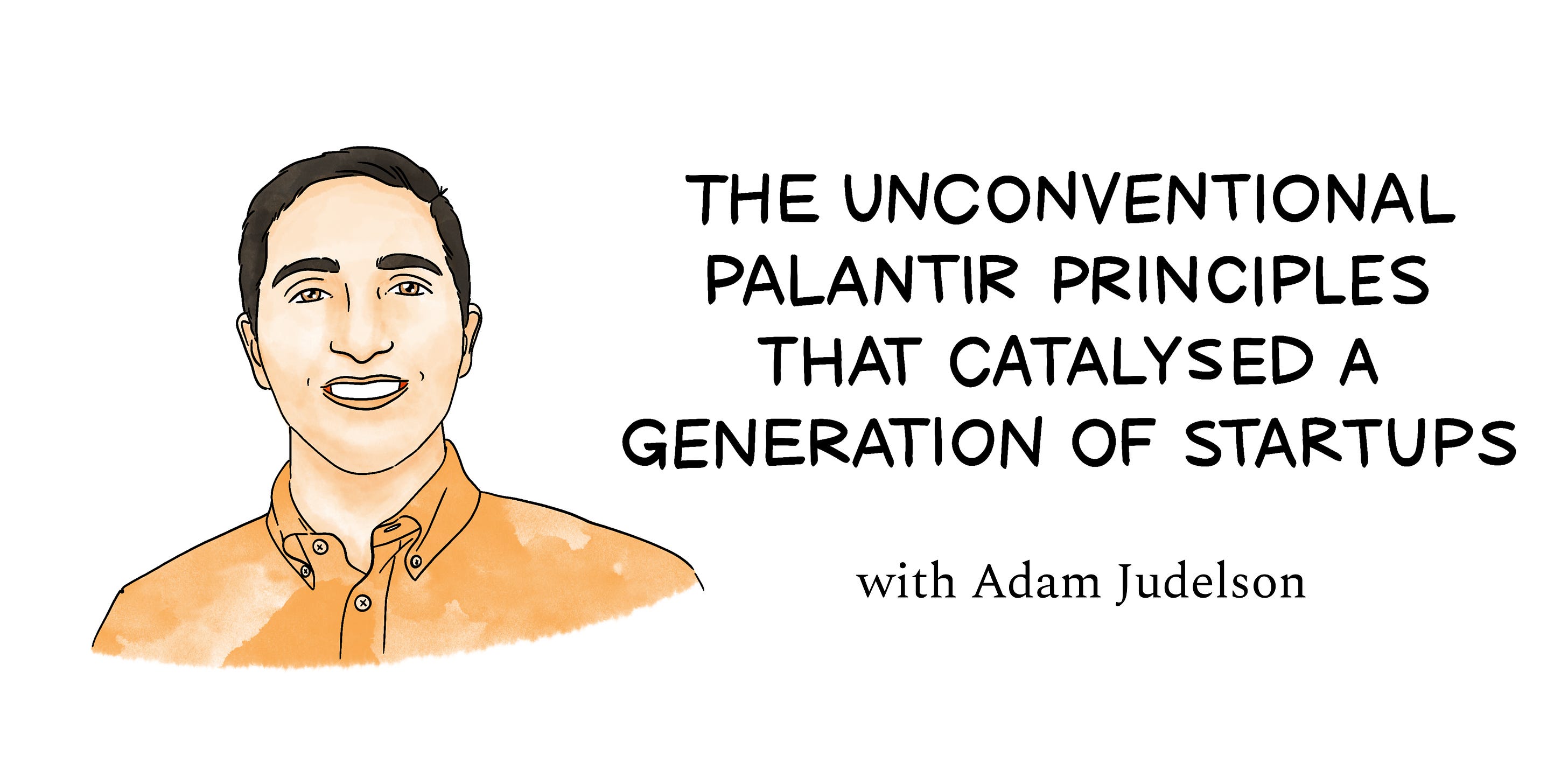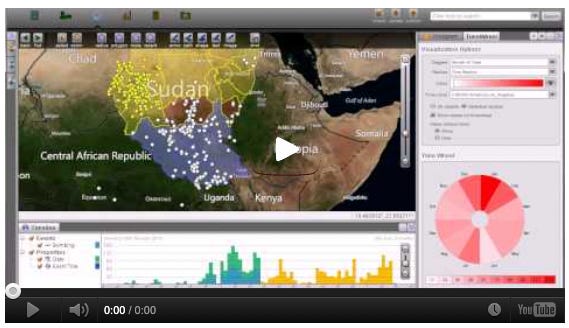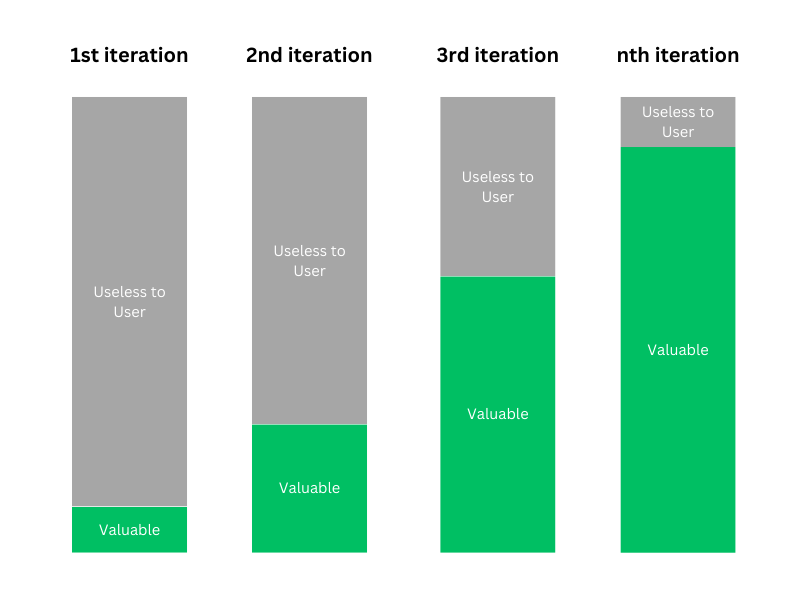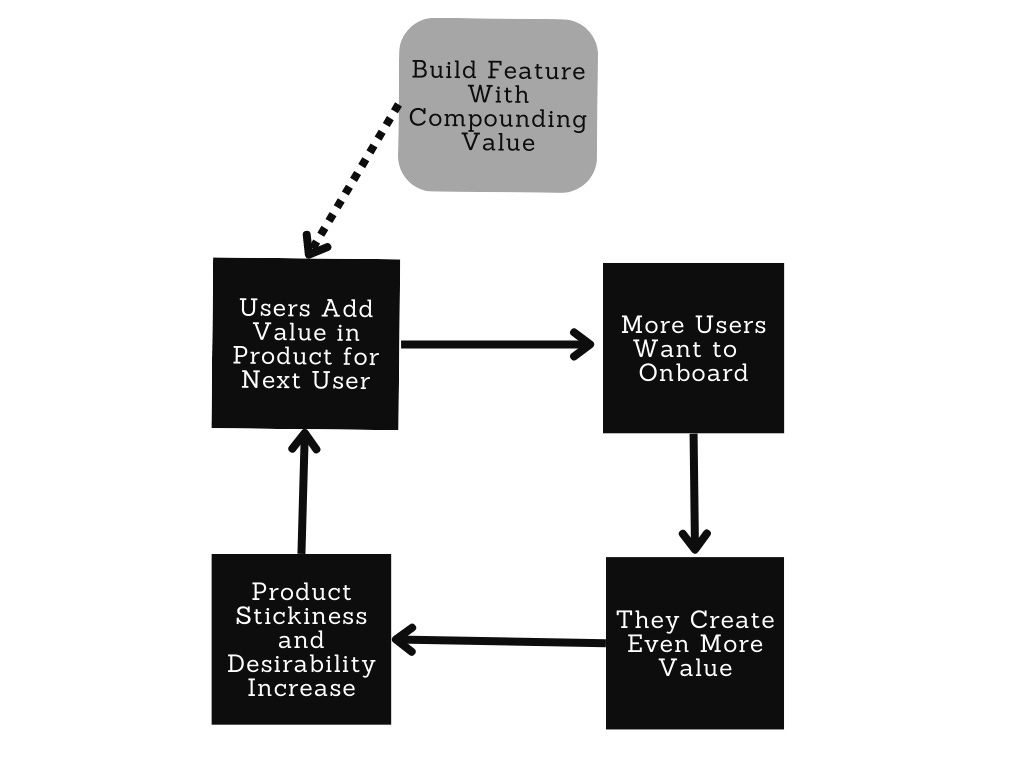The unconventional Palantir principles that catalyzed a generation of startups
Below is a peek at today’s paid subscriber-only post. Subscribe today and get access to this issue—and every issue. The unconventional Palantir principles that catalyzed a generation of startupsHow the principles we learned at Palantir spawned nine unicorns and 100+ venture-backed companies👋 Hey, I’m Lenny and welcome to a 🔒 subscriber-only edition 🔒 of my weekly newsletter. Each week I tackle reader questions about building product, driving growth, and accelerating your career. Next in my special paternity-leave guest series, I’m excited to bring you an incredible post by Adam Judelson. Adam spent seven years at Palantir, where he led product for their flagship Gotham data platform. Below, Adam shares his most lasting lessons from his time at Palantir. After Palantir, Adam went on to lead product at Slingshot Aerospace, built a startup for Deloitte, and then served as president at mePrism, where he grew their data privacy marketplace from zero to 100 million data points protected. Adam is also a two-time founder and advisor to businesses ranging from scrappy drone startups to space and satellite companies to large private-equity-backed firms. These days, he runs First Principles, a product agency focused on helping companies achieve their world-changing visions. You can find Adam on LinkedIn and Twitter, and definitely check out his Product Principles newsletter, where he shares lessons from the best emerging tech product leaders. The CTO of Palantir Technologies, Shyam Sankar, in April 2023 testified before the U.S. Senate that “we must spend at least 5% of our [defense] budget on capabilities that will terrify our adversaries.” Shyam and CEO Alex Karp’s unwavering commitment to strengthening our country motivated me to resign from the civil service and permanently defer attending a top law school so I could join what was then Palantir’s small band of engineering mavericks. Our mission was simple: revolutionize the way the world’s largest and most important organizations answer their hardest questions. Fast-forward a decade, and Palantir is a public company whose alumni have gone on to build nine unicorns, from Anduril to Handshake to Amplitude, and over 100 additional venture-backed companies.¹ At Palantir, we didn’t believe in heavy processes, because we felt that formulas and playbooks tacitly give people permission to stop thinking for themselves. Nonetheless, as I reflect on the experiences we had together and as I now partner with new startups looking to learn from Palantir’s experience, I feel compelled to compile and share my unofficial list of learnings.² While the company has at times been a lightning rod for public speculation, the secrecy and misinformation surrounding its missions often prevent the amazing product lessons it forged from spreading the way they deserve. Not every lesson will work for every startup or innovation team, but I hope these ideas will catalyze others to consider unconventional approaches to doing the impossible and encourage the creation of more world-changing technologies. A playbook of first principles: To disrupt an industry. . .1. Forward-deploy your engineeringProduct thought leaders tend to extol the value of talking to users, but most are barely scratching the surface. At Palantir, one of the largest teams was called Forward Deployed Engineering.³ This is the team I joined when I first got hired, and we were responsible for making our early product live up to the vision. Our main goal was creating product solutions for issues blocking customer adoption, or that could unlock new growth. The golden nugget in this philosophy is that you don’t worry about how to ask users the right questions or obsess over “interviewing” them. Instead, you are literally there, in the shit with them, getting involved in what is happening. In the early days at Palantir, this meant flying to war zones carrying a bunch of laptops to where U.S. forces actually engaged the enemy. In a commercial context, it didn’t mean jumping on the phone with the fraud specialists at a major bank. It meant going and spending the next three months in customer operations centers, working the same leads as the customer. Anduril, where many Palantir alumni have gone next, continues a similar practice, and I’ve met numerous excellent PMs who work this way even when it’s not a part of the company culture.⁴ It’s not just getting downrange that matters. You have to be the user to unlock this concept. I don’t mean that spiritually as in “think like the user”; I mean literally do their same job with your product as an extended member of their team and see what you learn. You don’t embed for 20 minutes, either. A lot of the real aha moments come after you’ve been in the customer’s shoes for an extended period of time. Work with your product long enough that the customer is impressed that you’ve accomplished something real for their business that they couldn’t. In the early days of one of our most successful engagements that led to an over $100 million deal, the customer had no users of our product for the first 6 to 12 months. We formed a small team that was given direct access, integrated their data into our existing product, built prototype solutions for the unique problems this engagement taught us about, and then performed the analysis and briefed it directly to a top worldwide CEO. Some financial market analysts have judged Palantir harshly for this sort of embedded dedication, attempting to cast the company as a services organization or consultancy. They completely miss the point that this process is how to learn which problems matter the most and how to build compelling solutions; it is not a permanent state but rather a tool for the vanguard as it approaches a new use case. Further, when innovating in emerging technology applications, often the customer doesn’t yet have a conceptualization of how they will work in the future, so by being one of them, you can establish the first patterns for doing that work excellently. Instead of spending years iterating based on a loose understanding of the customer, we completely understood what mattered and executed immediately, driving real value an order of magnitude faster with superior results. Lessons:
2. Hire the |
| Every issue of the newsletter | |
| Access to a private Slack community | |
| Access to a curated collection of Lenny’s favorite reads and listens |
Older messages
How a traumatic brain injury made me a better PM—and person
Monday, June 12, 2023
Takeaways from a period of extreme adversity
Building a long and meaningful career | Nikhyl Singhal (Meta, Google)
Monday, June 12, 2023
Listen now (86 min) | Brought to you by Superhuman—The fastest email experience ever made | Microsoft Clarity—See how people actually use your product | Eppo—Run reliable, impactful experiments —
Moving fast and navigating uncertainty | Jeremy Henrickson (Rippling, Coinbase)
Sunday, June 4, 2023
Listen now (69 min) | Brought to you by Miro—A collaborative visual platform where your best work comes to life | Mixpanel—Product analytics that everyone can trust, use, and afford | Lenny's Job
What working at Figma taught me about customer obsession
Friday, June 2, 2023
VP of Product Sho Kuwamoto on the importance of feel, service, and customer support
Storytelling with Nancy Duarte: How to craft compelling presentations and tell a story that sticks
Thursday, June 1, 2023
Listen now (77 min) | Brought to you by Microsoft Clarity—See how people actually use your product | Lenny's Job Board—Hire the best product people. Find the best product gigs | Eppo—Run reliable,
You Might Also Like
🚀 Ready to scale? Apply now for the TinySeed SaaS Accelerator
Friday, February 14, 2025
What could $120K+ in funding do for your business?
📂 How to find a technical cofounder
Friday, February 14, 2025
If you're a marketer looking to become a founder, this newsletter is for you. Starting a startup alone is hard. Very hard. Even as someone who learned to code, I still believe that the
AI Impact Curves
Friday, February 14, 2025
Tomasz Tunguz Venture Capitalist If you were forwarded this newsletter, and you'd like to receive it in the future, subscribe here. AI Impact Curves What is the impact of AI across different
15 Silicon Valley Startups Raised $302 Million - Week of February 10, 2025
Friday, February 14, 2025
💕 AI's Power Couple 💰 How Stablecoins Could Drive the Dollar 🚚 USPS Halts China Inbound Packages for 12 Hours 💲 No One Knows How to Price AI Tools 💰 Blackrock & G42 on Financing AI
The Rewrite and Hybrid Favoritism 🤫
Friday, February 14, 2025
Dogs, Yay. Humans, Nay͏ ͏ ͏ ͏ ͏ ͏ ͏ ͏ ͏ ͏ ͏ ͏ ͏ ͏ ͏ ͏ ͏ ͏ ͏ ͏ ͏ ͏ ͏ ͏ ͏ ͏ ͏ ͏ ͏ ͏ ͏ ͏ ͏ ͏ ͏ ͏ ͏ ͏ ͏ ͏ ͏ ͏ ͏ ͏ ͏ ͏ ͏ ͏ ͏ ͏ ͏ ͏ ͏ ͏ ͏ ͏ ͏ ͏ ͏ ͏
🦄 AI product creation marketplace
Friday, February 14, 2025
Arcade is an AI-powered platform and marketplace that lets you design and create custom products, like jewelry.
Crazy week
Friday, February 14, 2025
Crazy week. ͏ ͏ ͏ ͏ ͏ ͏ ͏ ͏ ͏ ͏ ͏ ͏ ͏ ͏ ͏ ͏ ͏ ͏ ͏ ͏ ͏ ͏ ͏ ͏ ͏ ͏ ͏ ͏ ͏ ͏ ͏ ͏ ͏ ͏ ͏ ͏ ͏ ͏ ͏ ͏ ͏ ͏ ͏ ͏ ͏ ͏ ͏ ͏ ͏ ͏ ͏ ͏ ͏ ͏ ͏ ͏ ͏ ͏ ͏ ͏ ͏ ͏ ͏ ͏ ͏ ͏ ͏ ͏ ͏ ͏ ͏ ͏ ͏ ͏ ͏ ͏ ͏ ͏ ͏ ͏ ͏ ͏ ͏ ͏ ͏ ͏ ͏ ͏ ͏ ͏ ͏ ͏ ͏ ͏ ͏
join me: 6 trends shaping the AI landscape in 2025
Friday, February 14, 2025
this is tomorrow Hi there, Isabelle here, Senior Editor & Analyst at CB Insights. Tomorrow, I'll be breaking down the biggest shifts in AI – from the M&A surge to the deals fueling the
Six Startups to Watch
Friday, February 14, 2025
AI wrappers, DNA sequencing, fintech super-apps, and more. ͏ ͏ ͏ ͏ ͏ ͏ ͏ ͏ ͏ ͏ ͏ ͏ ͏ ͏ ͏ ͏ ͏ ͏ ͏ ͏ ͏ ͏ ͏ ͏ ͏ ͏ ͏ ͏ ͏ ͏ ͏ ͏ ͏ ͏ ͏ ͏ ͏ ͏ ͏ ͏ ͏ ͏ ͏ ͏ ͏ ͏ ͏ ͏ ͏ ͏ ͏ ͏ ͏ ͏ ͏ ͏ ͏ ͏ ͏ ͏ ͏ ͏ ͏ ͏ ͏ ͏ ͏ ͏ ͏ ͏ ͏
How Will AI-Native Games Work? Well, Now We Know.
Friday, February 14, 2025
A Deep Dive Into Simcluster ͏ ͏ ͏ ͏ ͏ ͏ ͏ ͏ ͏ ͏ ͏ ͏ ͏ ͏ ͏ ͏ ͏ ͏ ͏ ͏ ͏ ͏ ͏ ͏ ͏ ͏ ͏ ͏ ͏ ͏ ͏ ͏ ͏ ͏ ͏ ͏ ͏ ͏ ͏ ͏ ͏ ͏ ͏ ͏ ͏ ͏ ͏ ͏ ͏ ͏ ͏ ͏ ͏ ͏ ͏ ͏ ͏ ͏ ͏ ͏ ͏ ͏ ͏ ͏ ͏ ͏ ͏ ͏ ͏ ͏ ͏ ͏ ͏ ͏ ͏ ͏ ͏ ͏ ͏ ͏ ͏ ͏ ͏ ͏ ͏ ͏ ͏








